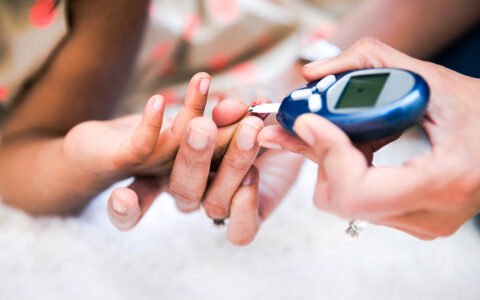Continuous glucose monitors (CGMs) have transformed diabetes care in recent years. The devices offer a nuanced view of glucose response, whether at meals, during physical activity, or with new medications.
The American Diabetes Association now recommends CGMs for all youth with diabetes, citing its value in monitoring glucose levels and decreasing the risks associated with low or high blood glucose. The devices also allow parents whose children have type 1 diabetes (T1D) to remotely monitor their child’s blood glucose from home, work and other remote locations, which can be reassuring.
Yet, many of the patients who might benefit most from the technology struggle to acquire the technology and put it to use, according to a recent study by Karishma Datye, M.D., a pediatric endocrinologist at Vanderbilt University Medical Center.
In Diabetes Care, Datye and colleagues zeroed in on the biggest challenges to CGM use facing youth with T1D, specifically focusing on the role of geographic location. Their new study highlights rurality as a key factor driving CGM-use discrepancies.
“It is critical for T1D providers to understand barriers to CGM use,” Datye said. “Our study found that youth with T1D living in rural areas experience significant disparities in accessing care.”
Beyond What Is Known
Challenges in healthcare access among rural populations are well known, but Datye’s new study is one of the first to peel back other contributing factors for children managing T1D. The research team also used continuous monitoring billing codes to represent real-world device use, whereas prior studies have relied upon CGM prescription data, Datye said.
“It is critical for T1D providers to understand barriers to CGM use.”
The study analyzed 13,645 patient visits that spanned 52 months, of which 5,485 visits, or 40 percent, included a billing code for CGM interpretation. Approximately two-thirds of the patients in the study lived in officially designated urban areas; the rest were considered rural residents.
Children living in small, rural towns had 31 percent lower odds of completing a CGM-billed visit when compared with those living in urban areas. Those living in isolated rural towns had even lower odds – 49 percent lower.
The disparities persisted even after the researchers accounted for race, ethnicity, insurance and other demographic variables. Rurality remained a central, albeit previously understudied, factor contributing to low CGM use.
“This is despite nearly 20 percent of the United States population living in rural areas, where the incidence of T1D is significantly higher than in urban communities,” the authors wrote.
Community Care to Improve Use
All 2,008 study participants were treated through the Eskind Pediatric Diabetes Program, which is part of Monroe Carell Jr. Children’s Hospital at Vanderbilt. The program provides care for children with diabetes throughout the Southeast via a network of community clinics.
Efforts are underway by the Vanderbilt team to expand CGM use among patients with all forms of diabetes. These include geographically targeted programs and, within the adult clinic, a dedicated technology team.
“We introduce the concept of CGMs right away, the day we meet and diagnose a child with T1D,” Datye said. “Our goal is to prescribe a CGM to every interested child with T1D, or their parent, depending on the age of the child, within the first few weeks of diagnosis.”
While barriers to CGM use such as lack of insurance and socioeconomic status have been described, this study demonstrates that particular attention should be paid to patients with geographic access challenges, such as those living in rural settings, and those who are part of historically marginalized racial or ethnic groups.
“We are increasingly going into our communities to provide diabetes care. Our hope in caring for people in their communities is that access to our clinic will improve outcomes,” Datye said.
A Further Look
Even with these efforts, several hurdles remain for rural residents, Datye says.
For one, the study found a plateau in the overall rise of CGM adoption during the height of the COVID-19 lockdown among rural residents, which suggests that patients living in rural areas may be particularly vulnerable to health system disruptions.
Given the study findings regarding CGM use, the researchers noted that “health systems should proceed with caution in using technology-based solutions to address care gaps.”
This may be true even for seemingly tech-savvy groups, like teens.
“In general, teens and young adults have been shown to use diabetes devices less than older adults and younger children. Understanding the reasons for these differences is key,” Datye said.
“Understanding why there are differences in CGM use in different populations is the first step in addressing disparities.”
In collaboration with Sarah Jaser, Ph.D., William R. Long Director of the Division of Pediatric Psychology at Vanderbilt, Datye is working on a project to understand the reasons why teens may discontinue CGM use.
“Understanding why there are differences in CGM use in different populations is the first step in addressing disparities,” Datye said.






